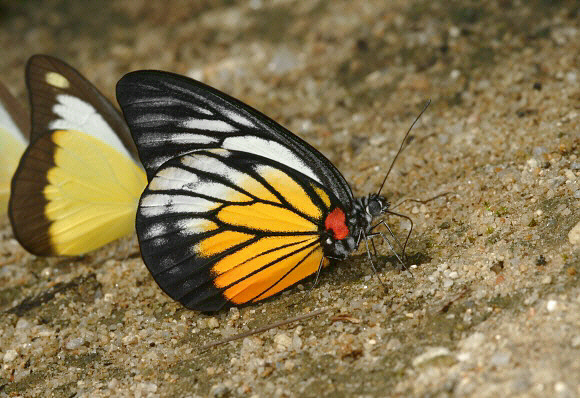
Introduction
There are 6 species in the genus Prioneris, all endemic to the Oriental region. They bear a strong superficial resemblance to the Delias Jezebels. Both genera are unpalatable to birds, so it seems likely that they form a Mullerian mimicry group.
Prioneris philonome is found in peninsular Malaysia, Singapore, Sumatra, Borneo and Java.
Habitats
In Malaysia this species is found in disturbed forest edge habitats including riverbanks, roadsides, plantations and in the vicinity of villages at elevations between sea level and about 400 metres.
Lifecycle
I have no data regarding the early stages of philonome, but in the closely related sita the larva is described as being a dull blue-green colour, with the head and body segments dotted with minute blue tubercules. Most Prioneris species are believed to feed on Capparis ( Capparidaceae ).
The pupa of sita is described as bright green in colour, with an interrupted yellow dorsal line and a short curved crimson line below the thoracic segments. It is sharply pointed at the head, and has a thoracic keel. The pupa of philonome is probably similar in shape and general colour.
Adult behaviour
Males of philonome are usually seen in one’s and two’s imbibing mineralised moisture from damp sand or gravel, often in the company of Appias lyncida, Eurema hecabe and other yellow Pieridae. The similar Delias species on the other hand do not normally visit damp ground, instead preferring to get their sustenance from nectar.
Prioneris, unlike Delias, are robust and powerful flyers, but nervous in nature. If disturbed they have a habit of instantly dashing off, only to resettle a few feet away, and if followed they then go back to their original feeding place. This game of cat and mouse can go on for a long time, so when attempting to photograph this gorgeous species, sore knees and elbows are inevitable, and a lot of patience is required !
